- Lightroom Presets
- Mobile Presets
-
Photoshop
-
Learn
-
Support
-
Install
- Best Sellers
- Blog
By Ana Mireles on | No Comments

Photographing groups is fun, but it can also be challenging. You need to find poses that suit different genders, body types, ages, etc. Additionally, the context in which the group photo is taken should be taken into account, as the scenarios can range from cozy family gatherings to professional corporate photos.
In this article, you will find a great selection of poses to use as inspiration for your next group portrait photoshoot.
These poses are especially suited for groups that include both children and adults. However, they can be adapted and used with other groups as well.
The fun and engaging piggyback pose is ideal for family photos. It offers numerous combination possibilities, depending on the family size and the members' physical capabilities.
For families with young children, parents can carry the kids on their backs. In contrast, for families with older and stronger teenagers, consider having the teens piggyback their parents. Alternatively, siblings can piggyback each other while the parents stand nearby, adding a playful dynamic to the portrait.
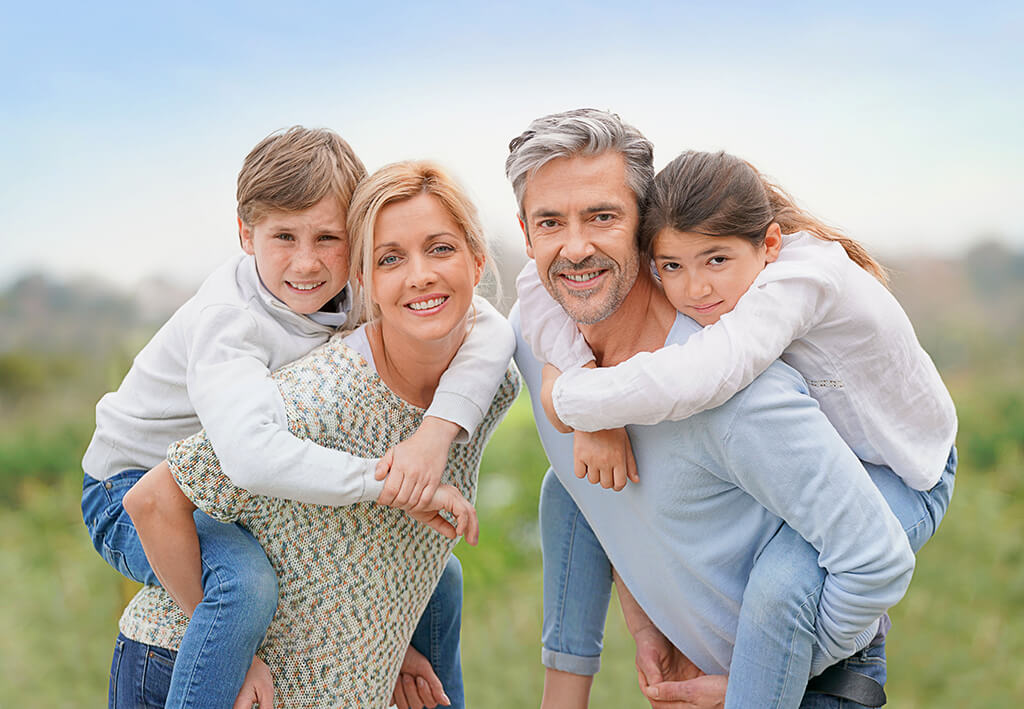
Having the family lying down on their belly is a versatile and charming pose that can have many variations. You can use it indoors by having the family lie on a bed or a fluffy carpet in the living room.
This pose also works wonderfully for outdoor photographs, whether the family is enjoying a picnic in the park or spending time at the beach. Its adaptability makes it a go-to choice for various environments.
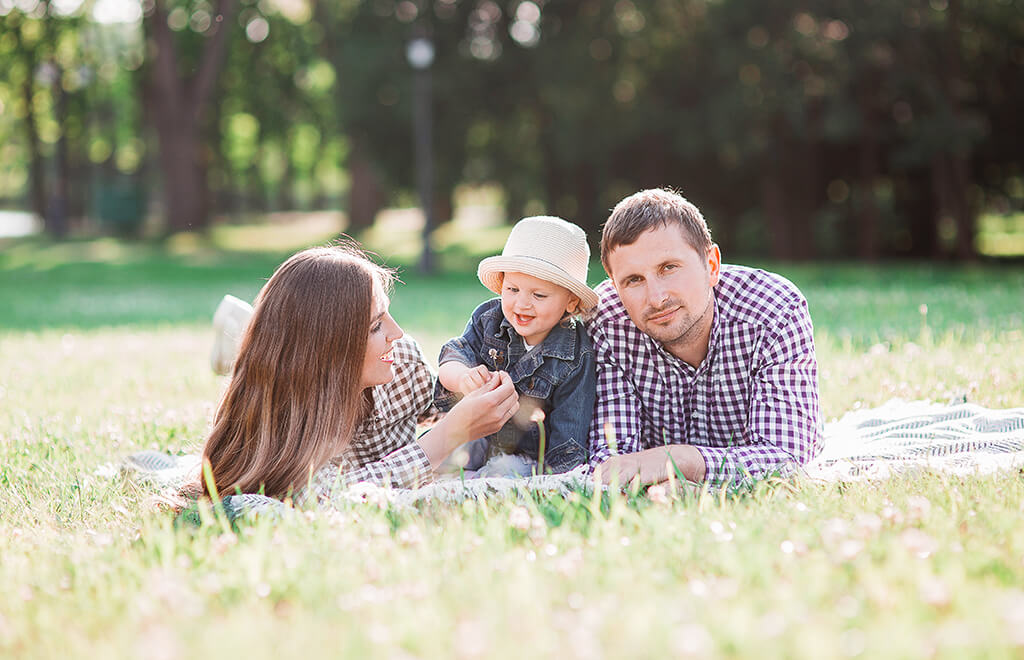
This pose is excellent for balancing height differences within the family, where parents squat beside their children. If squatting proves to be a challenge, kneeling or sitting on the ground are comfortable alternatives.
To foster a sense of closeness and connection, encourage them to hug. This will not only enhance the visual appeal but also capture the bonds and affection that define family relationships.
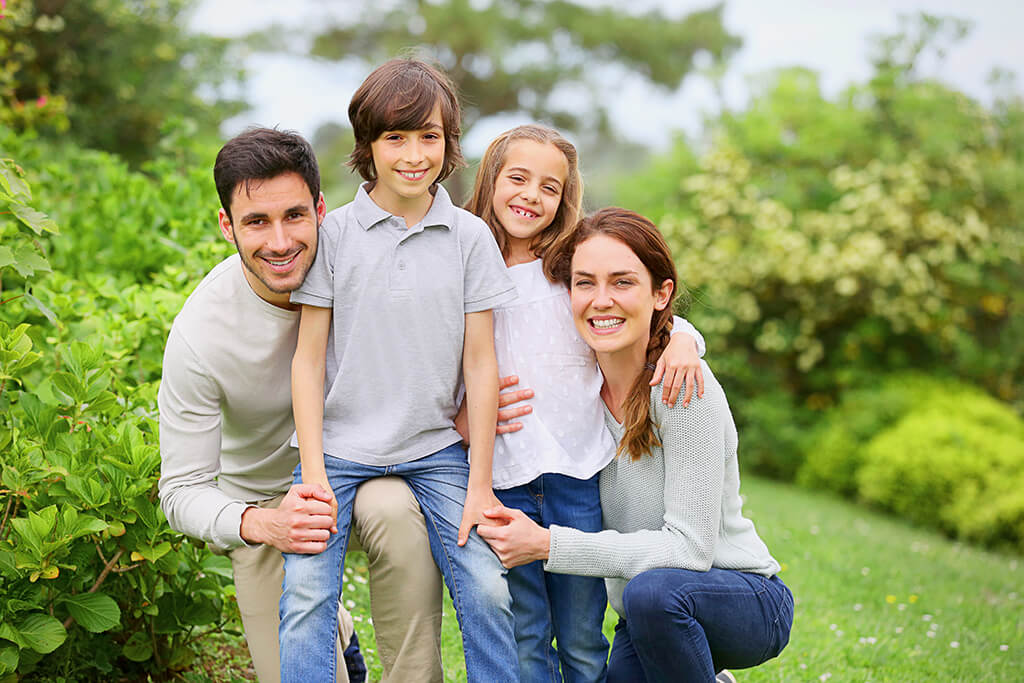
If you’re looking to break the monotony of a symmetric group, consider having one family member lie across the front.
The positioning of the remaining family members, whether sitting or standing, can be tailored to your preference. The feasibility of this pose also depends on the size of the person lying down. If everyone is standing, supporting someone lying across them will probably be more challenging. However, if the group is seated, the person can rest comfortably on their laps.
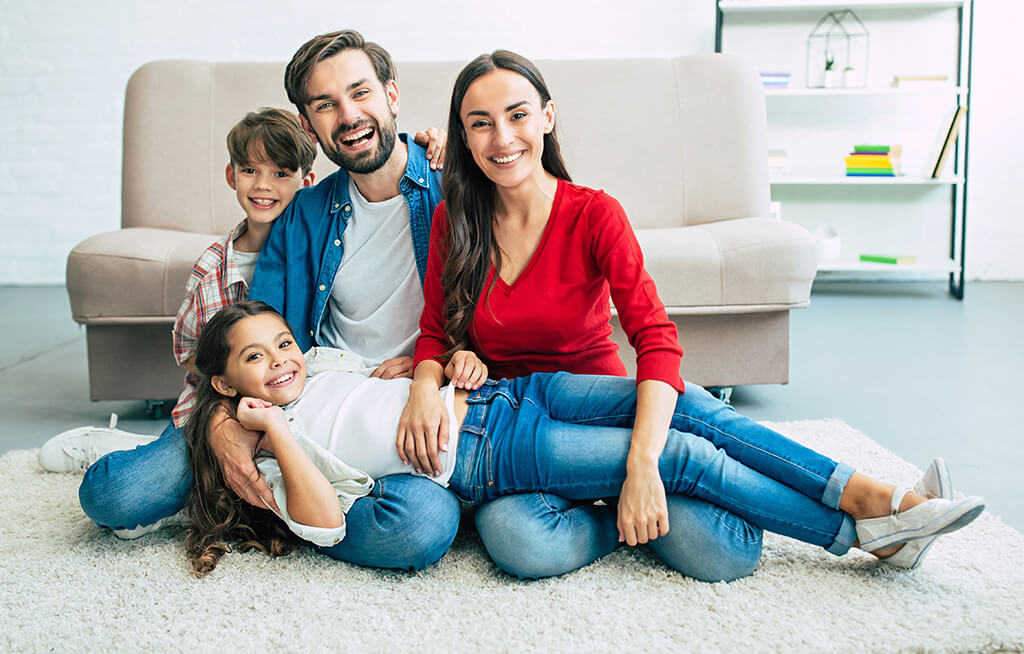
Managing sitting poses with large groups can be challenging, but the process is simpler if the group includes toddlers and small children.
Adults like parents or grandparents can sit on a couch, bench, or chair with the children on their laps. This setup ensures that everyone's faces are aligned at a similar height.
Options for the pose include the children looking directly at the camera, giving cheek kisses to the adults, or gazing at one another. Experiment with different variations to capture the moment.
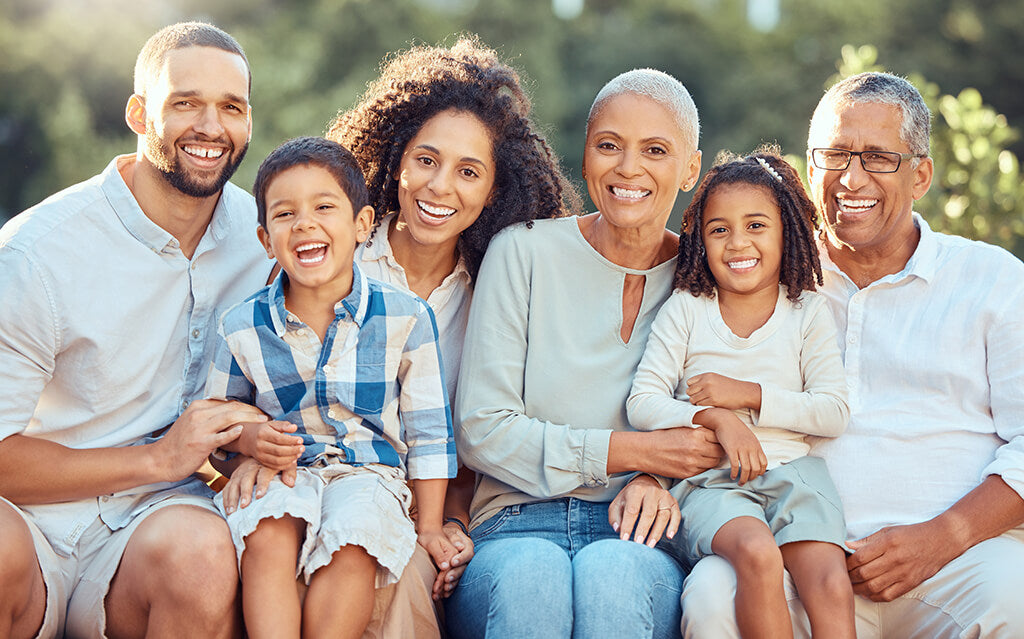
Photographing large groups can be challenging. If you position everyone in a single line, you’ll end up with too much background to include everyone in the frame.
A more effective strategy is to divide the group into two rows. This facilitates better interaction among the group members and results in a more dynamic composition.
While the conventional approach is to arrange individuals by height, with shorter members in the front and taller ones at the back, don't hesitate to experiment. For groups with many couples, consider placing men in the back and women in the front, or organize members by generation. Keep in mind the arrangement doesn't have to be symmetrical.
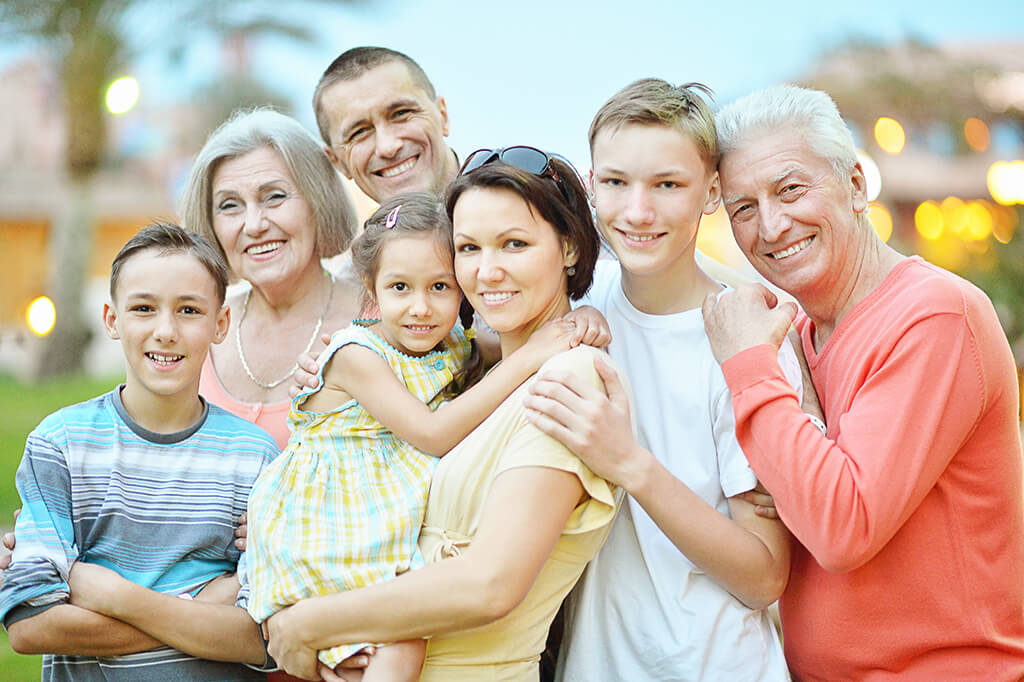
A triangle pose creates a visually appealing composition thanks to its dynamic diagonal lines and the stable base mirroring the strength of a family's connection.
A great way to utilize this pose is by organizing family members into a triangle by generation.
For instance, you can seat the grandparents at the front to form the base. The grandchildren can stand behind them, and the parents, representing the middle generation, can stand at the back, culminating the formation into the peak of the pyramid.
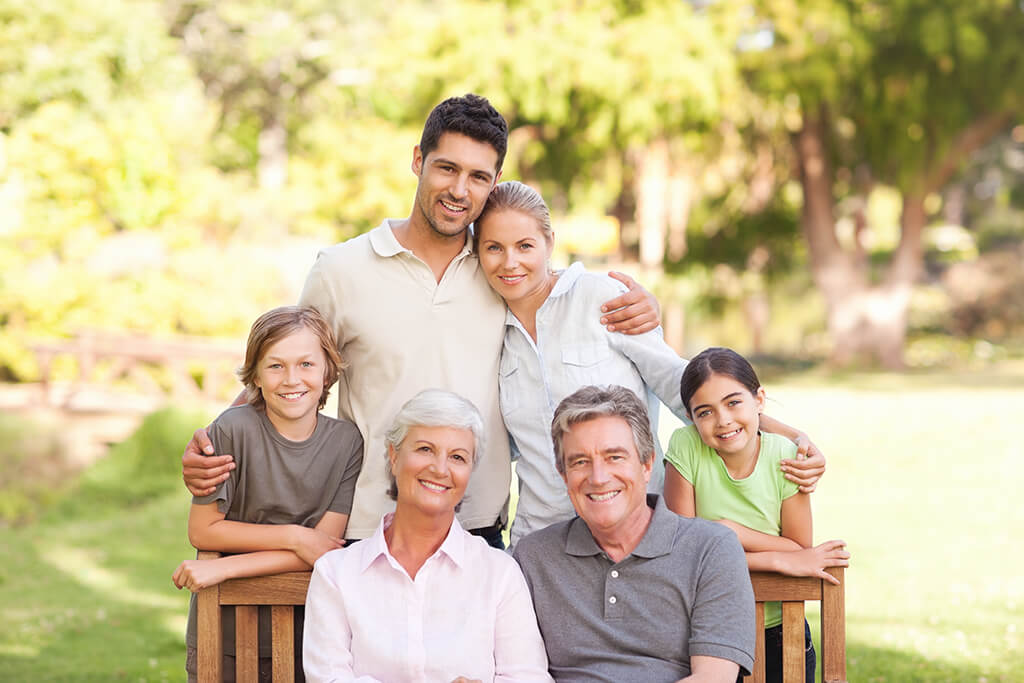
Since we’re talking about triangles, they work just as well if you reverse the shape. Start by positioning the smallest family member at the front to serve as the tip of the reverse triangle.
Next, create a second row behind them with two or three taller members to expand the triangle's shape. Finally, place the parents at the back, on either side, to form the base points of the triangle, completing the inverted formation.
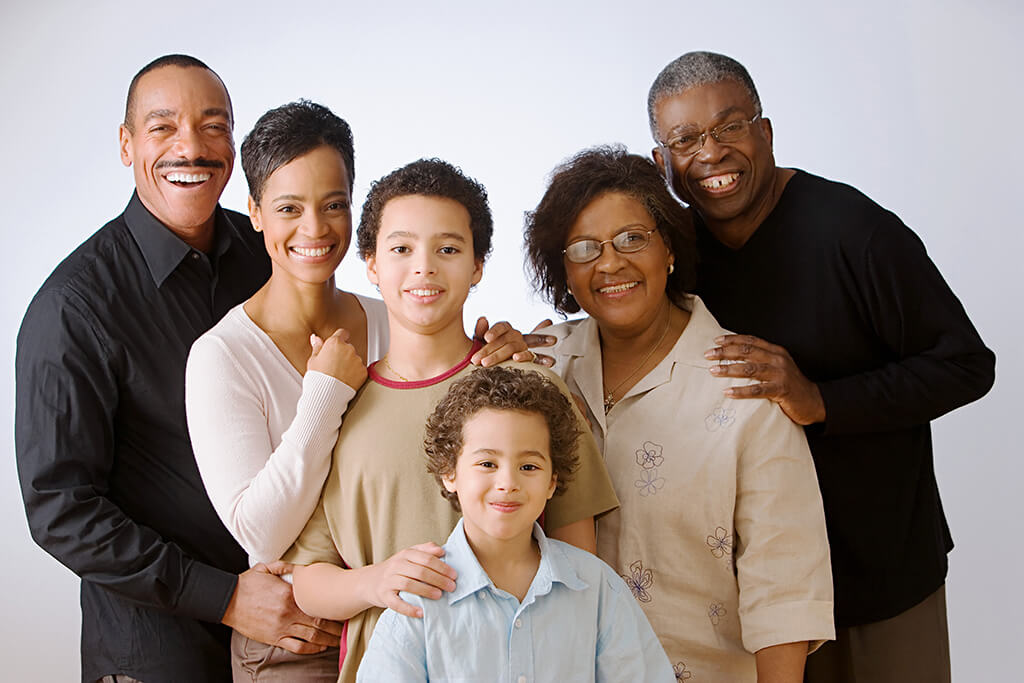
Sitting poses present a fantastic choice for capturing group portraits, particularly when it comes to family photographs.
Utilizing a couch for the seating arrangement is perfect because it not only offers sufficient room to comfortably fit all family members but also helps create a cozy and welcoming atmosphere. This setup naturally encourages closer interactions among family members, enhancing the photograph's feeling of unity and closeness.

For group portraits that include children, static poses might not always capture the energy and dynamics effectively. Therefore, consider suggesting a walking pose for the family.
Parents can hold their children in their arms, or the entire family can walk together while holding hands. This approach introduces numerous variations, ensuring the photoshoot is fun and lively.

This next group of poses is ideal for informal portraits and particularly suitable when everyone is approximately the same height. This makes them perfect for a group of friends who are around the same age. However, these poses can also work for colleagues, siblings, and other similar groups.
Building on the concept of action-oriented poses, this idea is especially engaging for a group of friends. Encourage the group to leap together for a photo session that's both fun and results in dynamic images.
The key to success with this pose lies in timing—the aim is to snap the photo at the peak of their jump. To maximize your chances of capturing that perfect moment, utilize your camera's burst mode and take several shots, not settling for just one or two jumps.
Additionally, a group captured mid-air makes for an excellent silhouette shot, so consider experimenting with this technique as well!
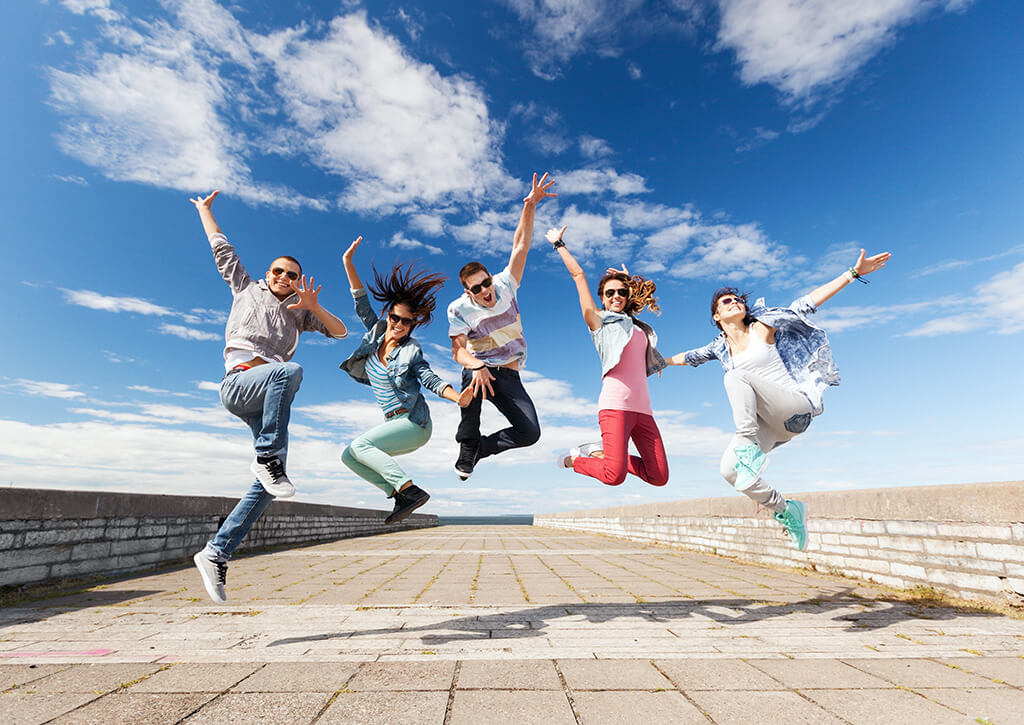
This pose is charming and flexible, suitable for casual photo shoots or capturing a wedding party.
Position one individual at the forefront, with the rest forming a line behind. Instruct individuals in odd positions to lean towards one side and those in even positions to lean towards the opposite side.
Should their similar heights cause them to block each other, encourage some to take a slight step sideways to clear the view.
Viewed from above, the arrangement should resemble a zig-zag pattern, creating an exciting and dynamic composition.

This laid-back pose is perfect for groups of friends, siblings, or family members, with everyone arranged on the floor. To enhance the visual interest, encourage them to adopt various sitting positions.
For example, someone could lean against a wall with their legs extended and crossed. Another person might sit with their legs crossed in front, while another could sit sideways, extending one leg and bending the other.
Experiment with different configurations to capture a diverse range of shots, offering plenty of choices for the final selection.

Encouraging your subjects to lean forward is a classic technique for achieving a flattering pose. This helps streamline the body's appearance, minimizes the risk of a double chin, and enhances overall posture.
In the context of a group photo, the aim extends beyond individual aesthetics to foster unity and engagement among the participants.
Prompting the group to lean forward not only creates a visual connection with the audience but also adds a lively and informal touch to the image. For a more playful and relaxed vibe, adjust the camera's position to a lower angle or even place it on the ground. Then, encourage the group to lean in towards the camera as though they were peeking or gazing into a hole, adding an element of curiosity and interaction to the shot.
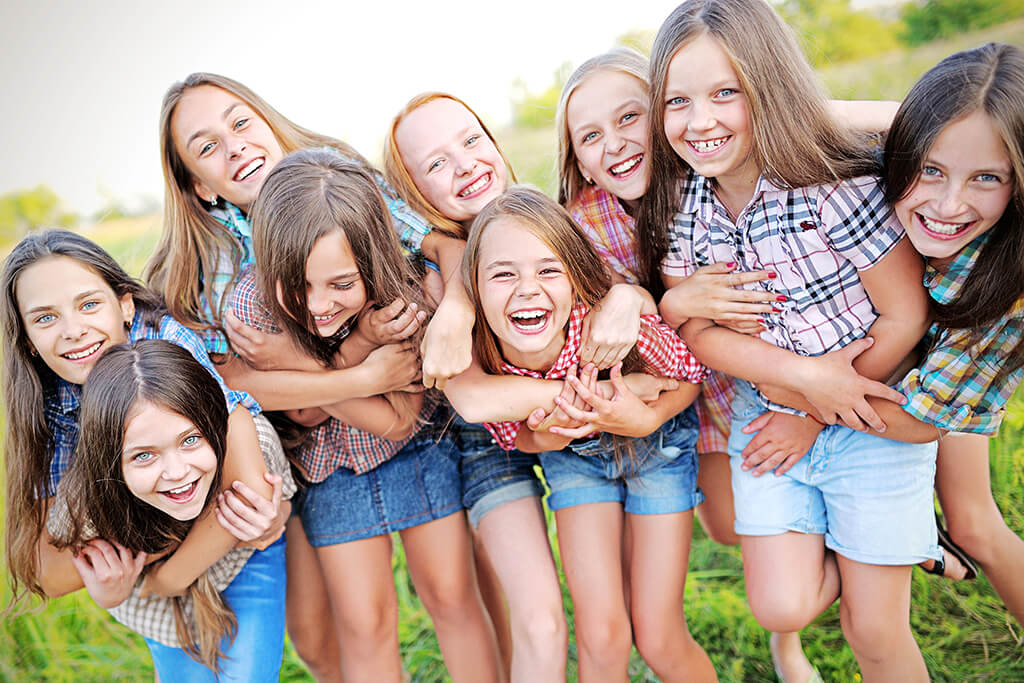
This pose ranks among the most relaxed and authentic for groups of friends or family members alike.
Encourage the group to sit together on a couch and embrace each other. Experiment with various arrangements, such as positioning them by height for visual harmony.
Another approach is to coordinate based on their attire, ensuring the colors of their outfits harmonize with those seated next to them.
To make the shot more dynamic, have some individuals lean forward while others recline against the back of the couch, creating a more lively and engaging composition.
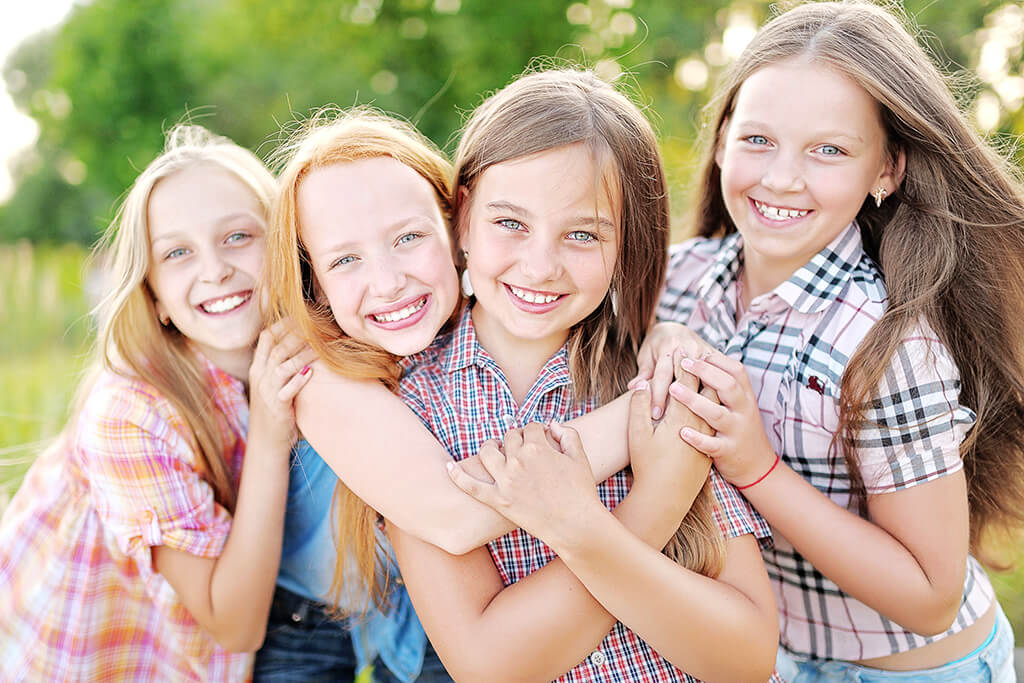
A friend often symbolizes a pillar of support, a concept that can beautifully translate into a group portrait.
Whether seated or standing, the key to this arrangement is to ensure the participants are of similar height, allowing each person to comfortably rest their head on the shoulder of the next.
This pose captures a sense of wholesomeness and intimacy, perfect for conveying the close-knit bond within a group of friends.
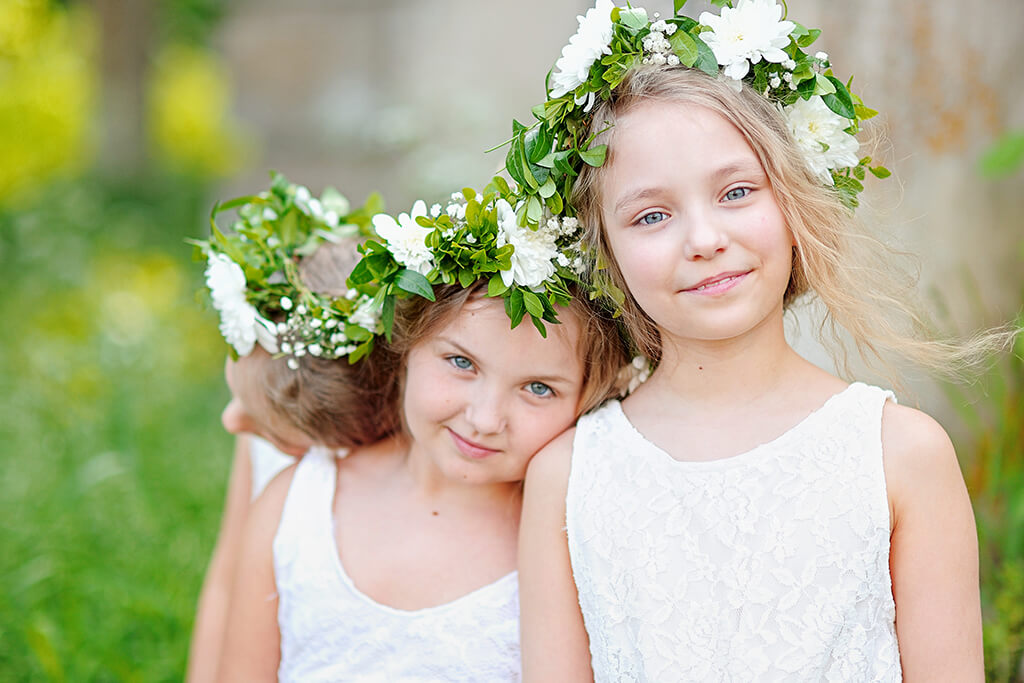
The sight of a group with arms raised high universally symbolizes happiness and triumph, reminiscent of the exhilaration felt during a victorious sports moment or the spontaneous joy in response to good news.
Capturing this essence with a group's hands uplifted can make for a compelling photograph as long it appears natural and genuine.
To achieve a natural look, opt for photo prompts that encourage spontaneous arm-raising rather than instructing the group to simply lift and hold their arms in position.

Taking a photo from an overhead perspective offers a unique and playful angle for group shots. Encourage everyone in the group to lie on the floor, possibly arranging themselves in a circle for added structure.
A fun variation of this pose involves having participants stretch their arms upwards, forming a 'V' with their fingers. By joining hands in this manner, they can create a star shape, adding a creative element to the composition.
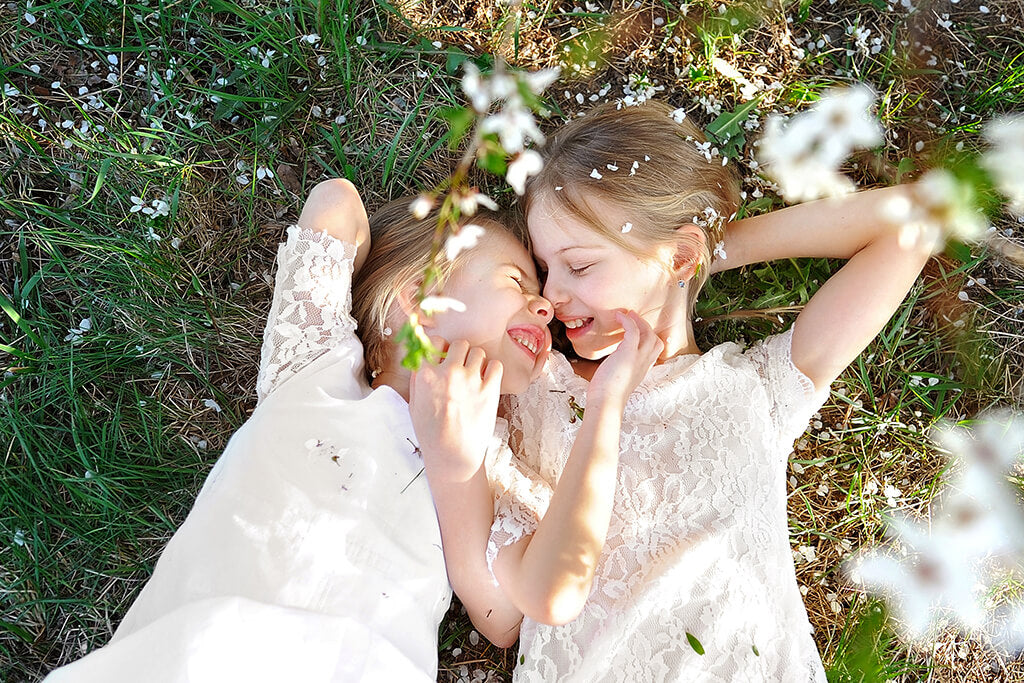
This is a classic pose, and there’s a good reason for it. You can use it in most situations with excellent results.
Organize a front row with individuals seated on a bench, a couch, or individual chairs. Position the remaining group members standing behind them.
Maintaining this arrangement lends itself to a more formal portrait. To infuse the photo with a more casual vibe, encourage those standing at the back to lean in towards the seated individuals, mimicking the action of sharing a secret, which adds an element of intimacy and spontaneity to the image.
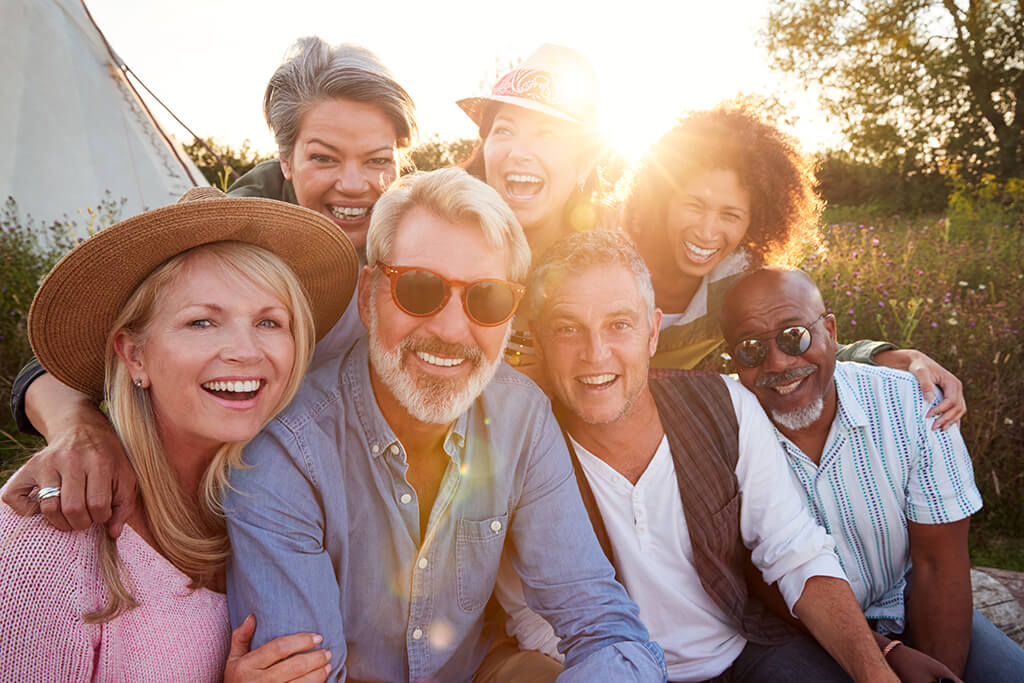
The notion that subjects must always face the camera in portraits isn't a hard and fast rule, especially outside the realm of formal photography. Casual shots gain an authentic feel from candid interactions.
To achieve this effect, position the group and then employ photo prompts to encourage interaction among them. Stay alert to snap those perfect, unguarded moments!
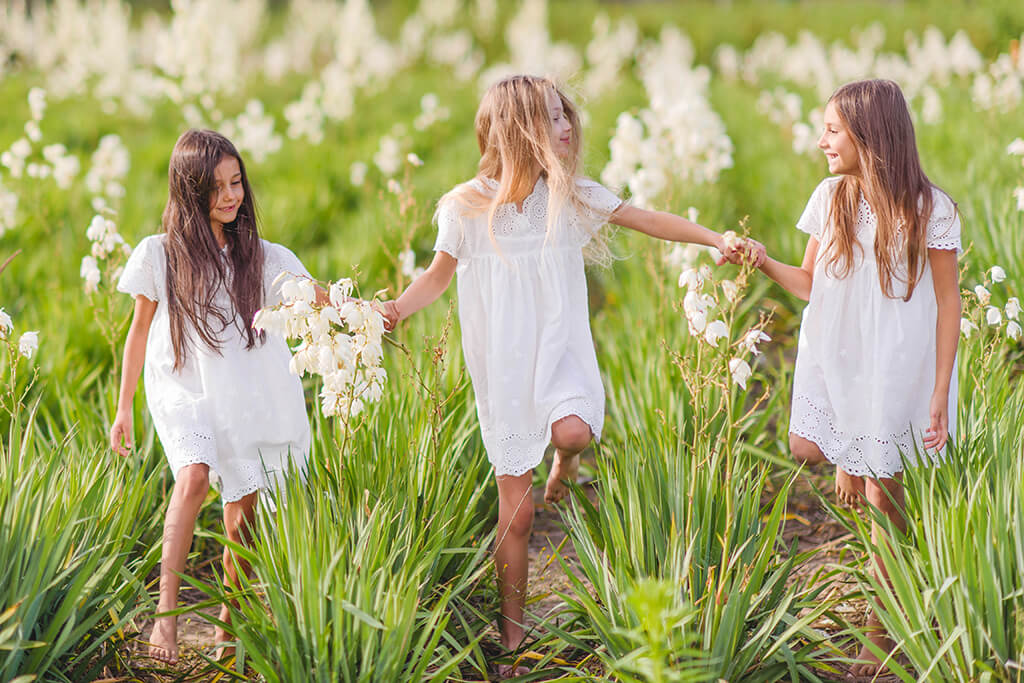
This final set of poses is tailored for formal situations or groups who don't have a personal relationship. They are ideal for corporate photos, business events, or academic ceremonies such as graduations.
This arrangement positions the group in a manner that exudes authority and leadership, which is particularly effective for corporate portraits.
Also known as a V-formation, this setup requires positioning one individual at the front and symmetrically arranging the others along the sides, extending backwards.
Attention to the depth of field is crucial to ensure that every member of the group is in sharp focus.
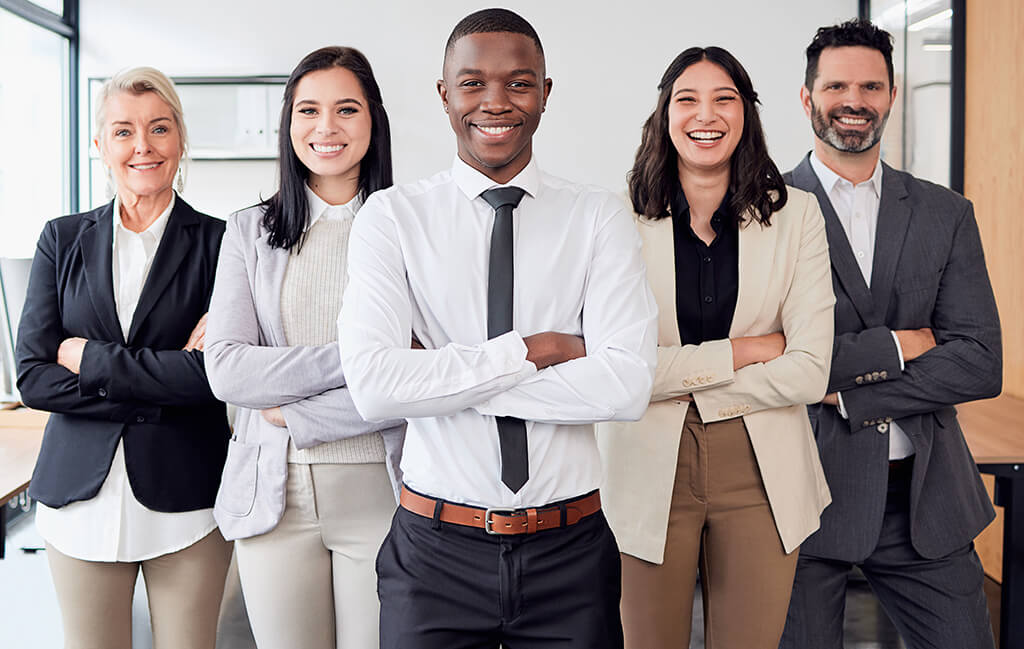
Arranging individuals around a table might seem boring at first, but it offers room for creativity. Mixing seated and standing positions or having someone lean on the table can make the setup more dynamic.
For larger groups, using a meeting room table can be ideal. For smaller assemblies, a desk can effectively accommodate this pose.

This pose is perfect for those who feel uneasy in front of the camera, offering comfort by concealing half of the body behind a desk. It allows individuals to rest their arms on the desk, reducing self-consciousness about their body language.
It’s also a great way to set the mood and show the person's working environment. Depending on their profession, the desk can be equipped with computers, printed graphics, art supplies, or other tools of their trade, adding a personal touch to their portrait.

Formal and corporate portraits can also benefit from action shots, with the power walk being an especially fitting choice.
Each person can be holding a different prop if it suits the idea - for example, a briefcase, a clipboard, a tablet, etc.
Consider shooting from a lower angle to amplify the sense of empowerment conveyed by the pose. Alternatively, positioning the camera at chest height offers a more conventional perspective.
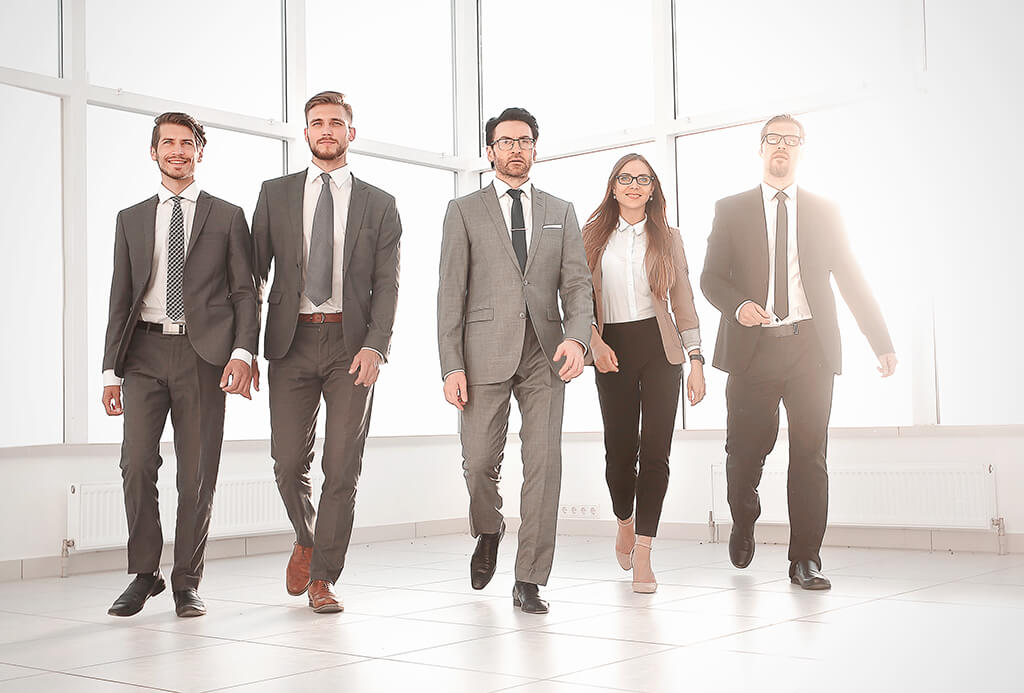
The crossed-arms pose is a timeless choice for portraits and is equally effective for group settings.
Should direct facing towards the camera seem too intense, suggest a slight turn of the body, about 45 degrees to the side, to soften the overall effect.

Sitting poses are great for formal portraits. However, when you’re dealing with a group, it can look a bit monotonous.
To make the photo more dynamic, seat individuals at varying heights. Consider utilizing a couch where some individuals are seated on the cushions while others sit on the armrests.
This arrangement encourages the viewer's gaze to move vertically across the photo, enhancing its visual interest.

For a casual yet corporate vibe, consider capturing the essence of a coffee break.
This scene can be set outdoors, with individuals holding cups of coffee or bottles of water, embodying a relaxed atmosphere. Encourage a more laid-back body language, with moments of laughter or interaction among colleagues, rather than direct engagement with the camera.
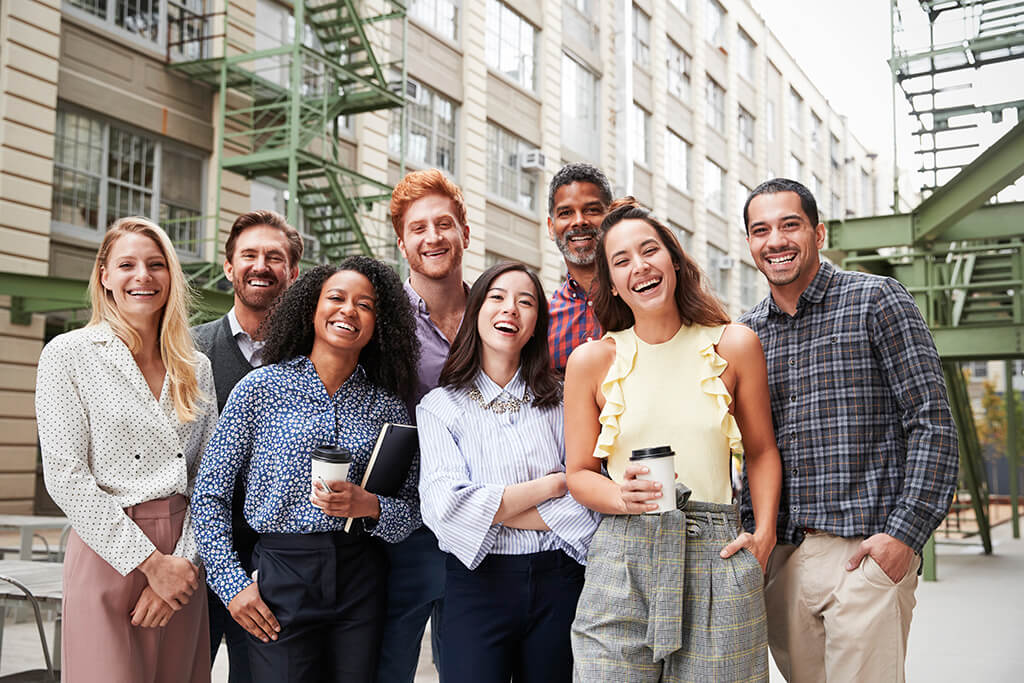
Staircases offer a fantastic opportunity to craft a dynamic group pose due to their natural ability to create varied levels. Positioning individuals at different heights, whether ascending, descending or simply positioned at intervals, enhances the composition's depth.
Traditionally, spacing group members one or two steps apart ensures visibility for everyone, even those positioned toward the back.
In addition, positioning yourself on a higher plane will help you to capture a larger group without having to spread them out too much, ensuring a cohesive and engaging portrait.

Having participants lean against a wall can be a great pose for group portraits. It offers them physical support, allowing their bodies to relax and appear more natural.
It’s important that you choose a wall with a solid neutral color, though a brightly colored wall that contrasts with their outfits can also work well. Either way, the background should complement the subject, not steal attention from it.
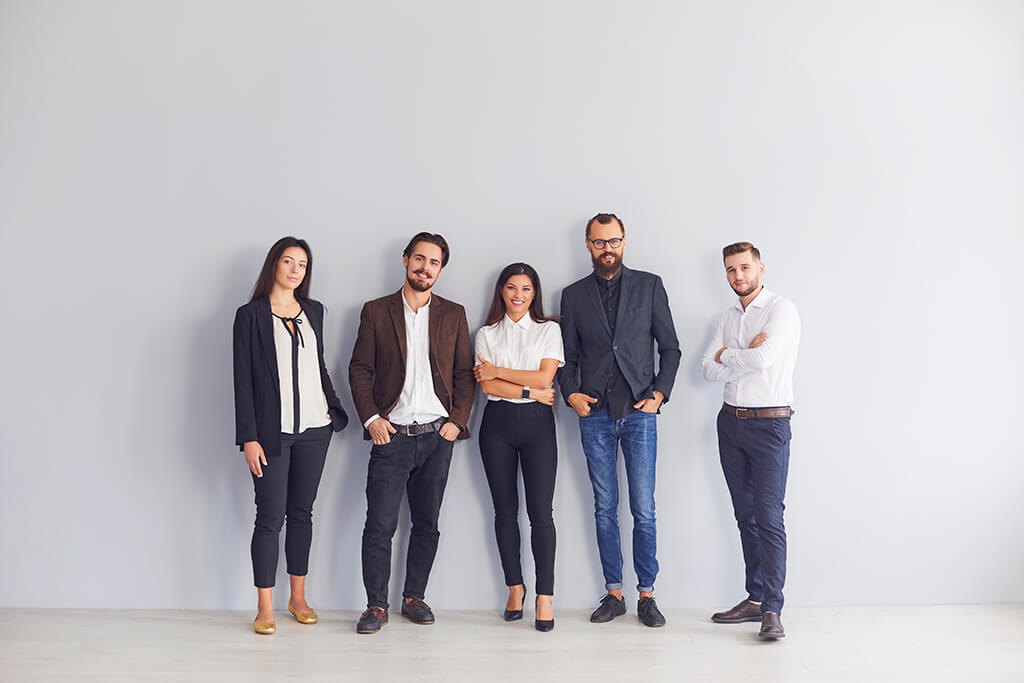
For larger groups, achieving a dynamic composition involves dispersing individuals across the scene.
Ensure clear visibility for each person, avoiding any overlaps that might obscure members of the group. Additionally, maintaining sufficient depth of field is crucial to keep everyone within the frame sharply in focus.

Capturing the essence of a group through photography requires creativity, experimentation, and a solid understanding of composition. From the intimacy of family gatherings to the formal atmosphere of corporate events, each pose offers a unique way to convey the relationships and dynamics within the group.
The key is to ensure that every individual feels comfortable and connected. By exploring these diverse poses, you can create memorable portraits that celebrate the unique stories and bonds that bring people together.
Do you have any questions or comments about Group Photo Poses? Leave us a comment below - we would LOVE to hear from you! And PLEASE SHARE our tutorial using the social sharing buttons (we really appreciate it)!




Ana Mireles is a Mexican photographer and researcher with a passion for writing and teaching. She’s collaborated in artistic and cultural projects in Mexico, Italy, and the Netherlands.

Comments